Dodge Journey: Installation
LEFT-HAND-DRIVE
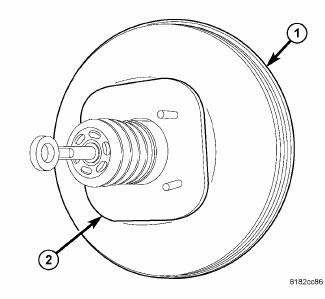
Fig. 35: BOOSTER SEAL
NOTE: Before power brake booster (1) installation, be certain a NEW dash seal (2) is installed on the booster mounting studs.
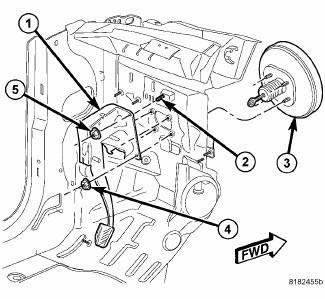
Fig. 36: PEDAL AND BOOSTER MOUNTING - LHD
1. Install the power brake booster (3) by sliding the push rod and studs through the dash panel and into mounting position.
2. Under the instrument panel, install the four power brake booster mounting nuts (4). To tighten the nuts, refer to the following step.
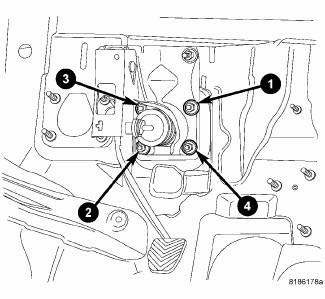
Fig. 37: MOUNTING NUT TORQUE SEQUENCE
CAUTION: Because of power brake booster design, it is very important to tighten the mounting nuts in the proper sequence.
3. Tighten the brake pedal/booster mounting nuts in the proper sequence to 23 N.m (17 ft. lbs.).
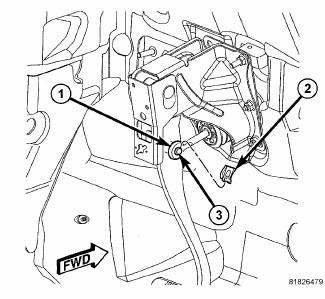
Fig. 38: BRAKE PEDAL CLIP
4. Using Mopar Lubriplate, or an equivalent, coat the surface of the brake pedal pin (3) where it contacts the brake booster input rod (1)
5. Install the power brake booster push rod (1) on the pin (3) mounted on the side of the brake pedal. Install a NEW retaining clip (2) on the end of the pin. Do not reuse the old clip.
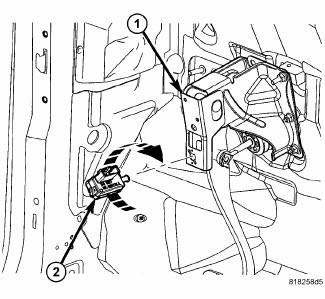
Fig. 39: STOP LAMP SWITCH AND PEDAL CLIP
CAUTION: Do not reuse the original stop lamp switch on vehicles built prior to July 21, 2008. Anytime a switch has been removed or its position compromised, a new switch must be installed and adjusted. Do not attempt to readjust the switch. The original brake lamp switch can be reused and adjusted on vehicles built on or after July 21, 2008.
6. Install and adjust a NEW stop lamp switch (2) in the brake pedal bracket (1) on vehicle built prior to July 21, 2008. The original brake lamp switch can be reused on vehicles built on or after July 21, 2008. 7. If equipped, install the silencer pad below the instrument panel.
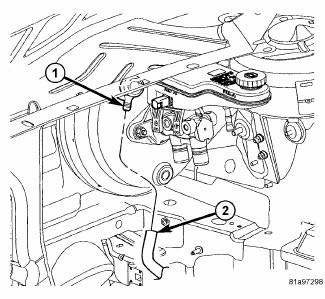
Fig. 40: VACUUM HOSE AT BOOSTER - LHD
CAUTION: When installing the vacuum hose on the check valve (1), make sure the hose is routed properly to avoid possible contact with unfriendly surfaces.
8. Connect the vacuum hose (2) to the vacuum check valve (1).
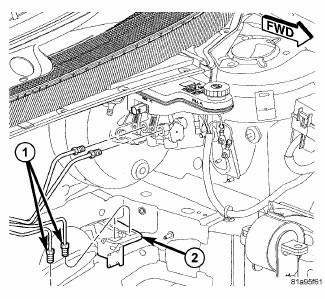
Fig. 41: REAR BRAKE TUBES AT JUNCTION BLOCK
9. Connect the rear brake tubes (1) to the junction block (2). Tighten the tube nuts to 17 N.m (150 in. lbs.).
10. Install the master cylinder.
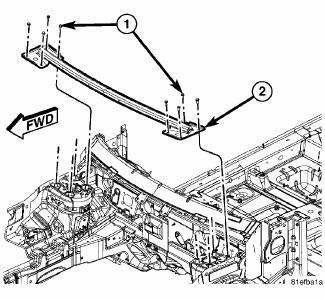
Fig. 42: WHEELHOUSE BRACE
11. Install the wheelhouse brace (2). Install and tighten the eight mounting bolts (four each side) (1) to 48 N.m (35 ft. lbs.).
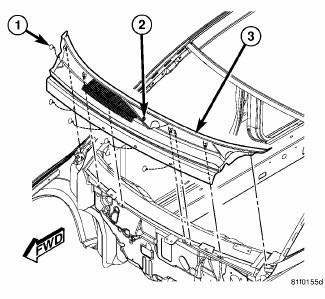
Fig. 43: COWL SCREEN
12. Install the cowl screen. Install the push-pins (1) securing the cowl screen to the wheelhouse brace and cowl. Rotate the screw (2) in the center of the cowl screen 90º counterclockwise to lock the screen in place.
13. Install the wiper arms.
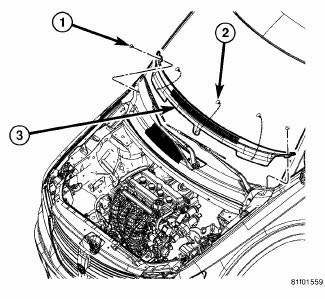
Fig. 44: COWL TOP SCREEN
14. Install the cowl top screen (3). Install the two push-pins (1) securing the cowl top screen at the ends.
Install the remaining push-pins (2).
15. Connect the battery negative cable to its post on the battery.
16. Bleed the base brake system.
17. Road test the vehicle to ensure proper operation of the brakes.
RIGHT-HAND-DRIVE
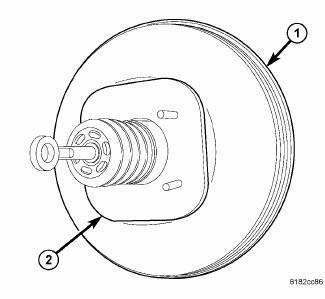
Fig. 45: BOOSTER SEAL
NOTE: Before power brake booster (1) installation, be certain a NEW dash seal (2) is installed on the booster mounting studs.
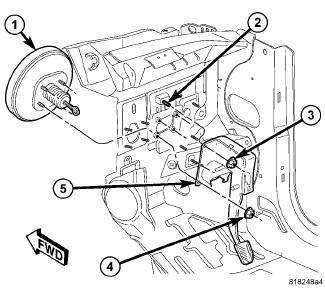
Fig. 46: PEDAL AND BOOSTER MOUNTING - RHD
1. Install the power brake booster (1) into the engine compartment using the reverse version of how it was removed. Slide the power brake booster push rod and studs through the dash panel and into mounting position.
2. Under the instrument panel, install the four power brake booster mounting nuts (4). To tighten the nuts, refer to the following step.
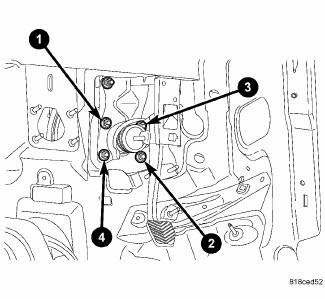
Fig. 47: MOUNTING NUT TORQUE SEQUENCE - RHD
CAUTION: Because of power brake booster design, it is very important to tighten the mounting nuts in the proper sequence.
3. Tighten the four brake pedal/booster mounting nuts in the proper sequence to 23 N.m (17 ft. lbs.).
4. If equipped with a manual transaxle, install the clutch master cylinder on the dash panel and clutch pedal bracket assembly.
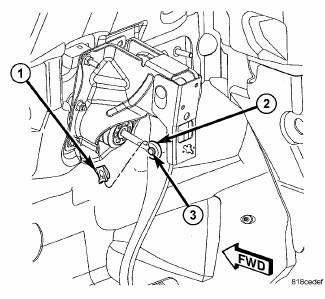
Fig. 48: BRAKE PEDAL CLIP - RHD
5. Using Mopar Lubriplate, or an equivalent, coat the surface of the brake pedal pin (3) where it contacts the brake booster input rod (2).
6. Install the power brake booster push rod (2) on the pin (3) mounted on the side of the brake pedal. Install a NEW retaining clip (1) on the end of the pin. Do not reuse the old clip.
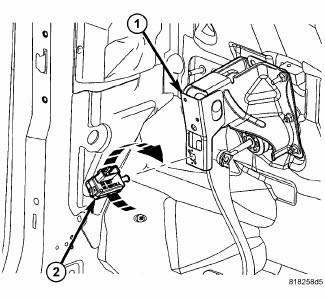
Fig. 49: STOP LAMP SWITCH AND PEDAL CLIP
CAUTION: Do not reuse the original stop lamp switch on vehicles built prior to July 21, 2008. Anytime a switch has been removed or its position compromised, a new switch must be installed and adjusted. Do not attempt to readjust the switch. The original brake lamp switch can be reused and adjusted on vehicles built on or after July 21, 2008.
7. Install and adjust a NEW stop lamp switch (2) in the brake pedal bracket (1) on vehicle built prior to July 21, 2008. The original brake lamp switch can be reused on vehicles built on or after July 21, 2008. 8. Install the brake tube routing clips with tubes onto the studs on the dash panel.
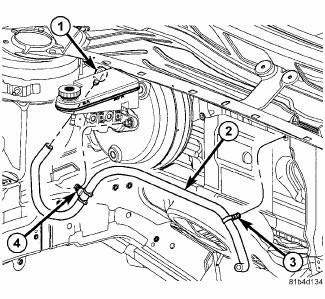
Fig. 50: VACUUM HOSE AT BOOSTER - RHD
9. Connect the vacuum hose (2) to the check valve (1) on the power brake booster.
10. Install the master cylinder.
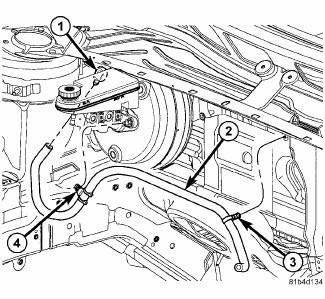
Fig. 51: VACUUM HOSE AT BOOSTER - RHD
11. Install the booster vacuum hose routing clip (4) onto the master cylinder mounting stud.
12. Install the vacuum hose routing clip (3) onto the stud on the dash panel.
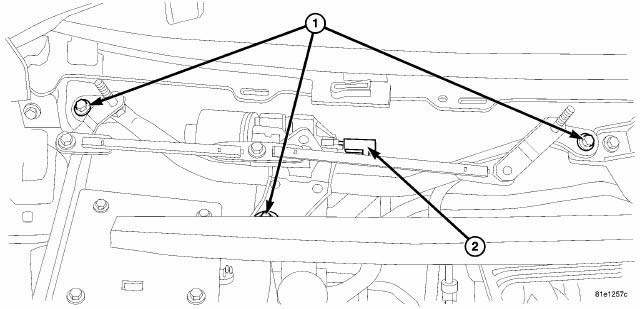
Fig. 52: MODULE -WIPER
13. Place the wiper module into position, install the three mounting bolts (1), Tighten bolts to 11 N.m (97 in.lbs.).
14. Connect the electrical connector (2) to the wiper motor.
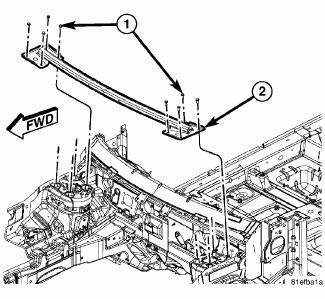
Fig. 53: WHEELHOUSE BRACE
15. Install the wheelhouse brace (2). Install and tighten the eight mounting bolts (four each side) (1) to 48 N.m (35 ft. lbs.).
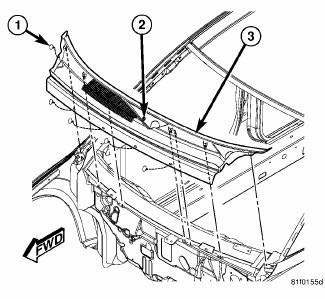
Fig. 54: COWL SCREEN
16. Install the cowl screen. Install the push-pins (1) securing the cowl screen to the wheelhouse brace and cowl. Rotate the screw (2) in the center of the cowl screen 90º counterclockwise to lock the screen in place.
17. Install the wiper arms.
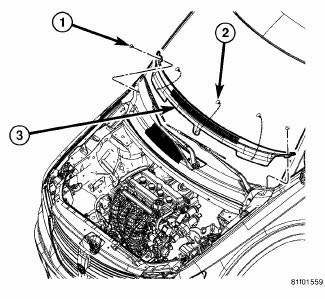
Fig. 55: COWL TOP SCREEN
18. Install the cowl top screen (3). Install the two push-pins (1) securing the cowl top screen at the ends. Install the remaining push-pins (2).
19. Install the engine appearance cover.
20. Connect the battery negative (ground) cable to its post on the battery.
21. Bleed the base brake system as necessary.
WARNING: Be certain a firm brake pedal is achieved prior to attempting to operate the vehicle.
22. Road test the vehicle to ensure proper operation of the brakes.
 Removal
Removal
LEFT-HAND-DRIVE
CAUTION: The vacuum in the power brake booster must be pumped down
before
removing the master cylinder to prevent the booster from sucking in any
contamination. This ...
See also:
Removal, Installation
REMOVAL
WARNING: Disable the airbag system before attempting any steering
wheel, steering
column, or instrument panel component diagnosis or service. Disconnect
and isolate the negat ...
Removal
FRONT
1. Raise and support the vehicle.
Fig. 163: TIRE AND WHEEL MOUNTING
2. Remove the wheel mounting nuts (3), then the tire and wheel assembly (1).
NOTE: In some cases, it may be necessary ...
Standard procedure
PCM/ECM REPROGRAMMING - GAS
Follow the instructions in order.
OBTAINING DIAGNOSTIC TROUBLE CODES
BULB CHECK
Key on: Bulb illuminated until vehicle starts, as long as all once per trip
(readiness ...

